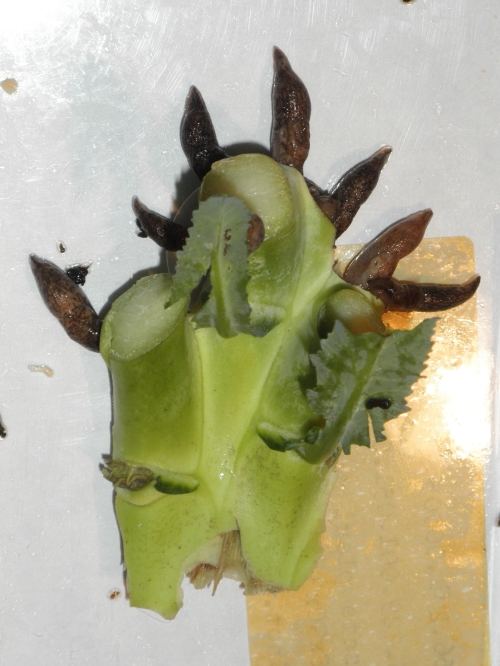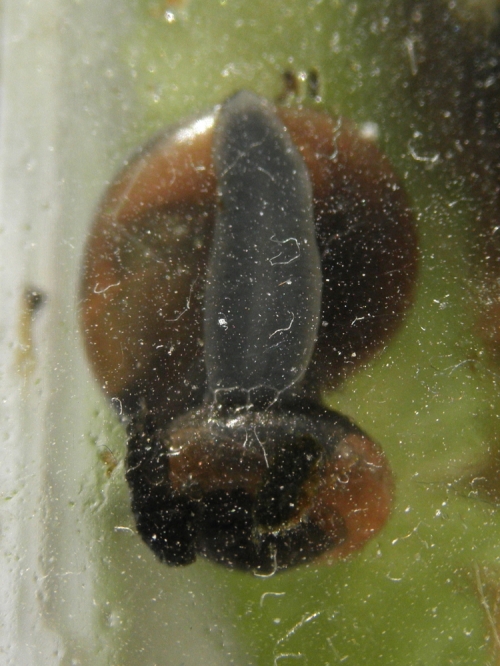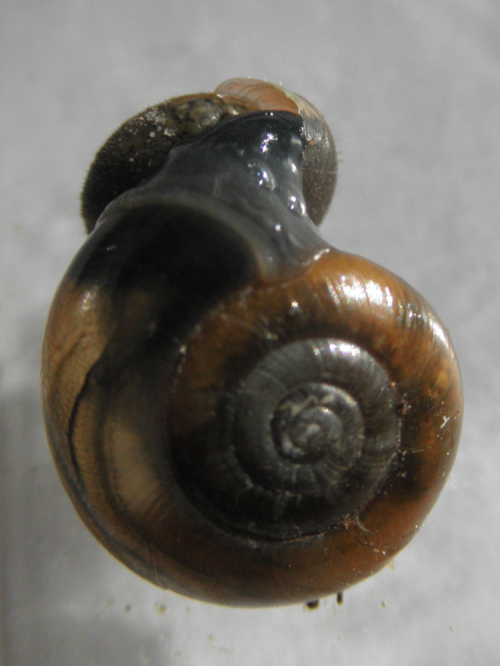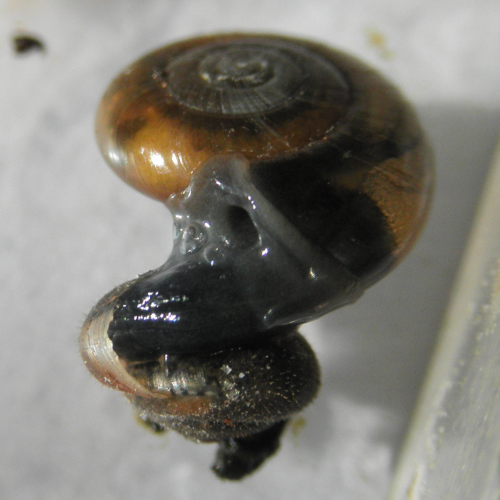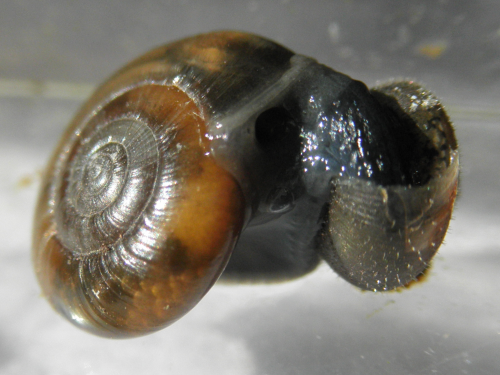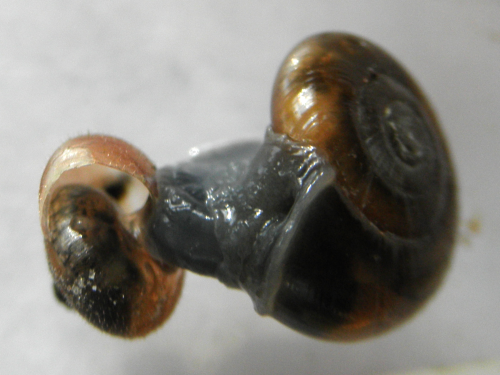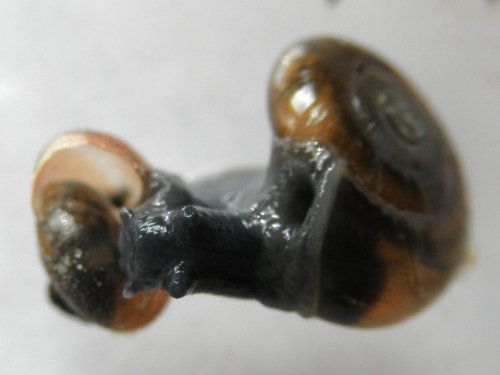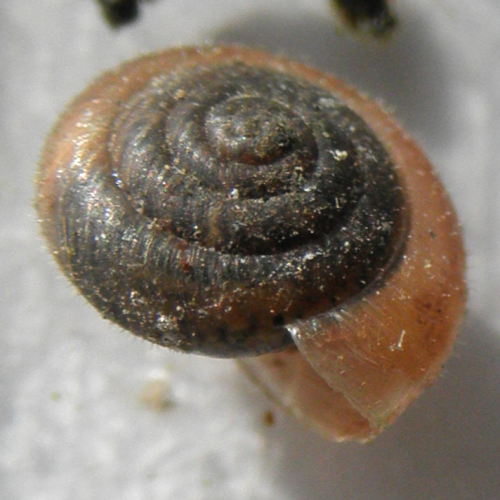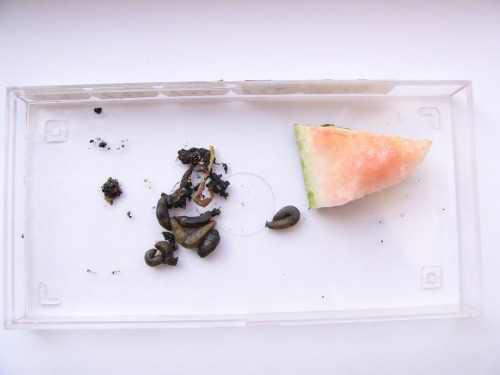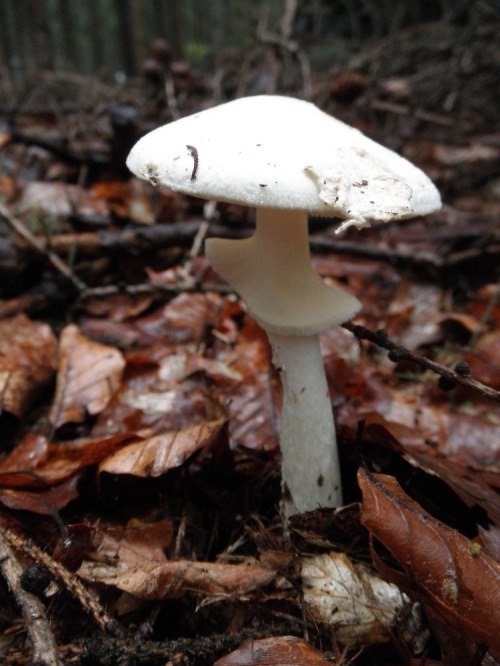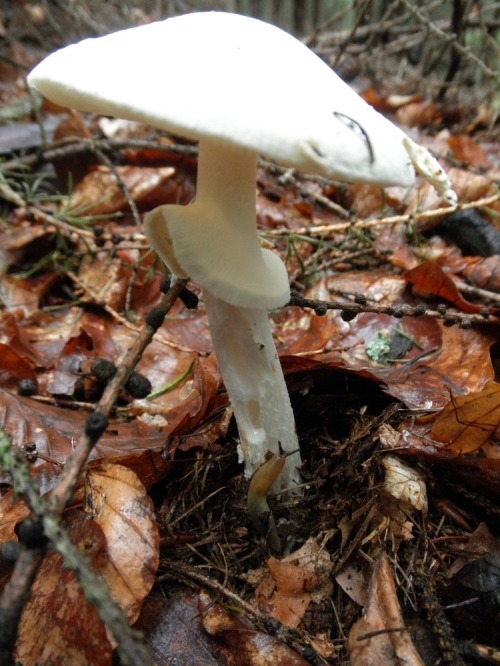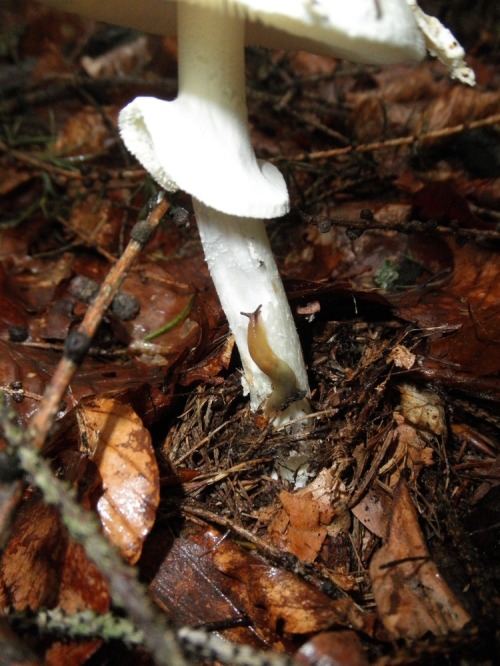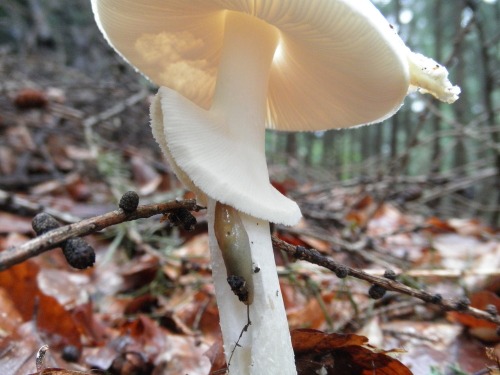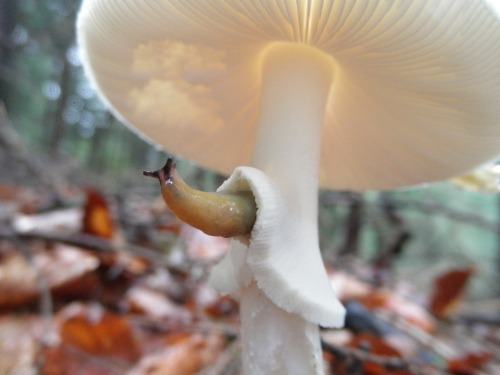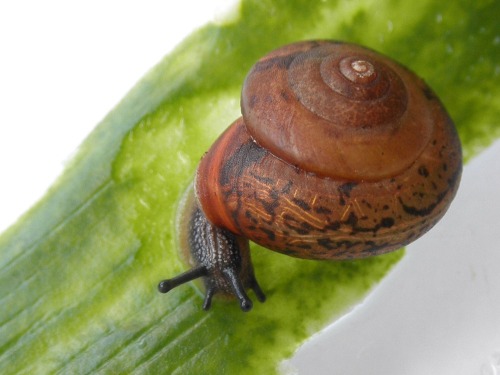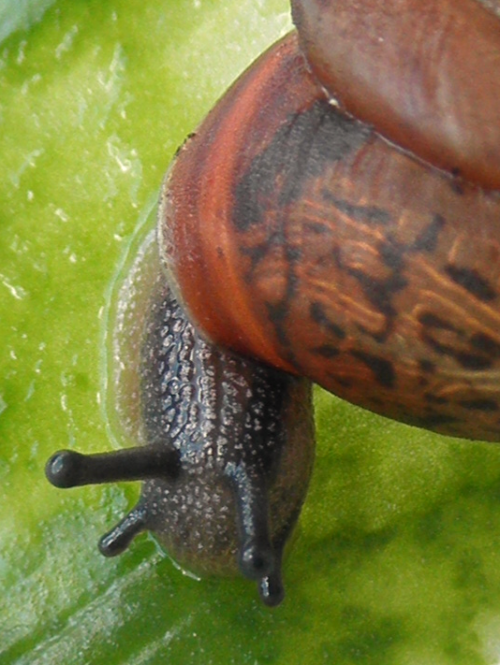Slugs (Deroceras reticulatum) know what is good for them. Broccoli is full of nutrients and vitamins.
Tag Archives: feeding
How does Oxychilus draparnaudi eat
Finally I have taken some photos of Oxychilus draparnaudi feeding on Trochulus hispidus after two months and half of keeping it.
I have taken the first photo on 15 October 10:34 AM and it stopped feeding on 10:52 AM. Although it is referred as a nocturnal animal, I was glad to see it feeding on daylight. It was sunny day, so taking photos was not difficult.
The first photo shows the foot, because it was feeding on the transparent lid of the terrarium. The predator was holding the whole of its prey when it was upside down.
Then I have removed the lid and rotated the lid to take these photos:
First photos immeditelly after the feeding:
Usually after the feeding process are shells empty and clean. I have probably distrubed its feeding process, because it seems that it have eaten the body of the first 3/4 of the first whorl only. The same shell of Trochulus hispidus still contain some material inside:
Open data:
continuously updated spreadsheet with data what Oxychilus draparnaudi have eaten.
How slugs fight against dehydration
I have put nine Tandonia budapestensis into fully transparent plastic terrarium with internal dimensions: 17 cm long, 8.3 cm width and 2.8 cm high. This transparent box (or any other transparent terrarium) seems to be useful for watching the behaviour of gastropods. They received a piece of skin of watermelon as a food source. They also received some water from water sprayer, but not too much because I was afraid of drowning of slugs. Approximately only centre of the box was sprayed once. There was nothing else in this terrarium. No substrate except of some small pieces of soil that were stinged to slug’s bodies during transport. No ventilation, but probably no loss of water in this closed artificial environment.
About one day later they were “sleeping” and they were clustered like this:
Two of them are not on the photo, because they were on the cover. Those two were also next to each other.
Similar photo of aggregation of slugs (of Limacus flavus) is on the page 470 in the 2001 book The biology of terrestrial molluscs.
This aggregation of slugs is explained as behaviour against loosing of water in drier environment. They are tightly packed to each other and they reduce the area of evaporation. (Snails do not do that, because they can retract to shells.)
I have taken the first photo at 18:57:33 very soon after the removing the cover of the terrarium. All slugs were sleeping and one was eating. Slugs have swiftly found out, that something has changed. After 1 minute 22 seconds (at time 18:58:55) they started to extend their tentacles and started to move.
Next days they did not make similar aggregation. It seems, that instead of that, they “discovered”, that they can be sitting on the watermelon and receive water through the body wall.
You can not see such behaviour if you will keep one, or two slugs in the terrarium.
When I have started to doubt that they will agrregate again and six days later after taking the first photo, I have taken these photos:
Surviving poisonous fungi
Today I was mushroom hunting. One of the best findings was the death cap Amanita phalloides, that is the most poisonous fungus of the Northern Hemisphere. It is deadly poisonous for humans, but some animals, such as gastropods can eat them without any problems.
When you are mushroom hunting, yellow slug Malacolimax tenellus is one of the most common species you can find even in spruce monoculture plantings. It is strictly woodland species living in Europe. Coniferous forests are not suitable environment for many gastropods, especially for snails. Snails can not create their shells in acidic coniferous forest habitats easily. Therefore usualy only few slug speciess thrive there.
Although this time the slug has fallen down when trying to go up over the annulus, there are many markings how the fungus is damaged by this slug: on the top of the cap (not visible on these photos), on lamellae, on the stipe, the whole volva is eaten.
Gastropods are alo resistant to hallucinogenic alcaloids hyoscyamine and atropine that are available for example in mandrake plant Mandragora officinarum.
References:
(in Czech) (15 May 2011) “Peyotl, mandragora a další: Ze světa halucinogenních rostlin” Český rozhlas [Czech Radio] http://www.rozhlas.cz/planetarium/priroda/_zprava/895839 – reference about the mandrake. It would be good to have more scientific reference for the resistence to mandrake. If you know some, let me to know.
Barker G. M. (ed.) (2001) The biology of terrestrial molluscs. page 263. http://books.google.com/books?id=WlvX-9Wt0toC
(in Slovak) Lisický M. J. (1991). Mollusca Slovenska [The Slovak molluscs]. VEDA vydavateľstvo Slovenskej akadémie vied, Bratislava, 344 pp.
Photo of the day (2): Monachoides incarnatus
Monachoides incarnatus is a very common hygromiid living in forests. Although it is very common, it does not go away from its forest to open land. It is easily recognizable for its reddish apertural margin and for example also for its typical microsculpture of shell (that is partly visible on the first photo).
I have taken this one to home and it is feeding on a piece of cucumber. It seems, that cucumber is the best food source for many snails. But I do not know, if it is only for large amount of water in cucumber (that may be more crucial in artificial conditions than in nature) or for the structure of this food or if it is somehow tasteful for snails.
